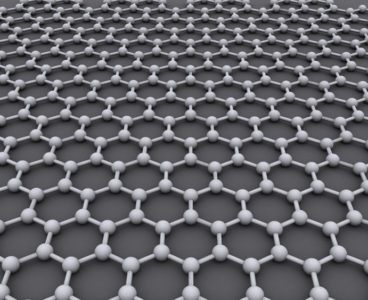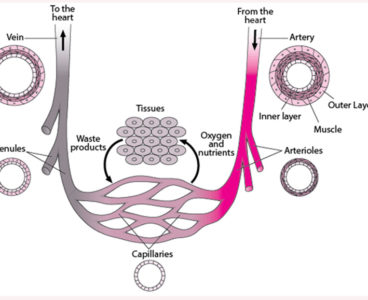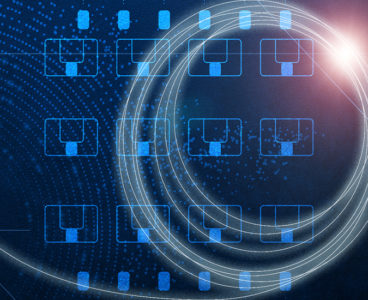Perovskite nanosheets show distinctive characteristics with significant applications in science and technology. In a recent study, researchers from Korea and the U.K. achieved enhanced signal amplification in CsPbBr3 perovskite nanosheets with a unique waveguide pattern, which enhanced both gain and thermal stability. These advancements carry wide-ranging implications for laser, sensor, and solar cell applications and…
imec demonstrates conductor films on 300 mm wafers with low resistivity
This month, at the 2023 IEEE International Interconnect Technology Conference (2023 IEEE IITC), imec, a research and innovation hub in nanoelectronics and digital technologies, provides the first experimental evidence that the resistivity of a thin conductor film on a 300 mm Si wafer can be lower than that of Cu and Ru, which are currently…
Chung-Ang University researchers breathe life into sensors with versatile gas masks
As technology progresses, devices are getting smaller, low-cost and more efficient. The advent of Internet of Things (IoT) has made researchers explore ways to make sensors more compact and portable. In a new study, researchers from Chung-Ang University, Korea have developed a device that is operable via breathing and can, therefore, be integrated into gas…
What are nanocatalysts?
Nanocatalysts are catalysts made up of nanoparticles or some other nanostructure such as a nanofoam. A catalyst is a material which increases the rate of a chemical reaction, without itself being altered or changed by the reaction. Nanostructures are engineered structures with features at the nanoscale — between one and 100 nanometers. An obvious advantage…
What are nanostructures?
Nanostructures are engineered structures with features at the nanoscale — between 1 and 100 nanometers. They include nanotextured surfaces, nanoparticles and nanotubes, as well as more complex nano-scale structures. A nanometer (nm) is one billionth of a meter, which is just slightly larger than the atomic scale — individual atoms in a solid are between…
What are nanoparticles?
Nanoparticles are engineered particles of between one and 100 nanometers in diameter, a size known as the nanoscale. To put this into context, a nanometer (nm) is one billionth of a meter, and the distance between individual atoms in a solid is between 0.1 nm and 0.4 nm. Nanoparticles therefore range in size from tens…
Breakthrough paves way for photonic sensing at the ultimate quantum limit
A Bristol-led team of physicists has found a way to operate mass manufacturable photonic sensors at the quantum limit. This breakthrough paves the way for practical applications such as monitoring greenhouse gases and cancer detection. Sensors are a constant feature of our everyday lives. Although they often go unperceived, sensors provide critical information essential to…
TROY awarded $161K National Science Foundation grant
By Savanah Weed, University Relations Coordinator, Troy University Troy University professors continually make advancements in their respective fields, most recently with Dr. Raj Vinnakota’s acceptance of a $161,597 grant from the National Science Foundation to further research building a device that would allow for faster data recording and processing at the photon level. Faster speeds…
NanoScientific Symposium 2022 now open for registration
Researchers in the fields of nanoscience and nanotechnology are invited to register for the NanoScientific Symposium 2022, an international event that brings together researchers and entrepreneurs. To register, go to event.nanoscientific.org Global NanoScientific Symposium 2022 First launched in 2018, NanoScientific Symposium has brought together thousands of attendees in both live and virtual events for engaging…
Seeing more deeply into nanomaterials
From Brookhaven National Laboratory: From designing new biomaterials to novel photonic devices, new materials built through a process called bottom-up nanofabrication, or self-assembly, are opening up pathways to new technologies with properties tuned at the nanoscale. However, to fully unlock the potential of these new materials, researchers need to “see” into their tiny creations so…
CEA-Leti scientist receives $3.30M grant to develop nanoscale memories inspired by insect nervous systems
CEA-Leti has announced that Elisa Vianello, senior scientist and Edge AI program coordinator, has received a $3.30 million (€3 million) grant from the European Research Council (ERC) to build nanoscale memory devices inspired by insect nervous systems for such applications as consumer robotics, implantable medical diagnostic microchips and wearable electronics. The artificial intelligence (AI) community…
R&D 100 winner of the day: Microhydraulic Motors
MIT Lincoln Laboratory’s Microhydraulic Motors are a new way of making things move on a microscale, providing a scalable actuation platform with a torque density that is two orders of magnitude higher than that of electric motors. These actuators have the power to enable precision medical robotics to perform minimally invasive surgeries, shape-changing materials or…
Pusan National University scientists develop simpler way to create common chemical detection platform
Sensors to detect viruses, explosives or drugs often use a technique called surface-enhanced Raman spectroscopy (SERS) in which light wavelengths from a chemical or biological species adsorbed on metal nanostructures are detected and mapped to the identity of the species. In SERS, detection efficiency depends on the surface morphology of the nanostructure. Now, scientists have…
What is nanoengineering?
Nanoengineering deals with structures at the nanoscale — between one and 100 nanometers. A nanometer (nm) is one billionth of a meter, and the distance between individual atoms in a solid is between 0.1 nm and 0.4 nm. The nanoscale is therefore about as small as materials can get, without becoming individual atoms. Nanotechnology and…
Top-10 areas of amazing science at Brookhaven Lab in 2021
By Karen McNulty Walsh and Stephanie Kossman, Brookhaven National Laboratory Research at the U.S. Department of Energy’s (DOE) Brookhaven National Laboratory spans scales from the cosmic to subatomic, advancing our understanding of the world around and within us. Looking for discoveries that spark transformational technologies? Brookhaven has those, too! Here’s the 2021 recap of important…
Researchers demonstrate technique for recycling nanowires in electronics
By Yong Zhu and Matt Shipman, North Carolina State University Researchers at North Carolina State University demonstrated a low-cost technique for retrieving nanowires from electronic devices that have reached the end of their utility and then using those nanowires in new devices. The work is a step toward more sustainable electronics. “There is a lot…
Light-shrinking material lets ordinary microscope see in super resolution
by University of California San Diego Electrical engineers at the University of California San Diego developed a technology that improves the resolution of an ordinary light microscope so that it can be used to directly observe finer structures and details in living cells. The technology turns a conventional light microscope into what’s called a super-resolution…
World’s smallest, best acoustic amplifier emerges from 50-year-old hypothesis
By Troy Rummler Scientists at Sandia National Laboratories have built the world’s smallest and best acoustic amplifier. And they did it using a concept that was all but abandoned for almost 50 years. According to a paper published May 13 in Nature Communications, the device is more than 10 times more effective than the earlier…
Graphene-based flowmeter sensor measures nano-rate fluid flows, Part 2: The graphene context
by Bill Schweber, Contributing Author The previous part of this article looked at the challenges of nanoflow sensors, especially with respect to blood flow. This part looks at graphene, which is the basis for the new sensor. Graphene is a material structure which did not exist until relatively recently. However, its constituent element of graphite…
Graphene-based flowmeter sensor measures nano-rate fluid flows, Part 1: The challenge
by Bill Schweber, contributing author When it comes to nearly all biological measurements, the ranges of many of the parameters of interest are orders-of-magnitude below those with which many engineers are familiar. Instead of megahertz or even kilohertz, the living-creature world is in the single or double-digit hertz range, such as the roughly 60+ beats…
Atomically thin device could turn your smartphone into a supersmart gas sensor
By Theresa Duque Nitrogen dioxide, an air pollutant emitted by fossil fuel-powered cars and gas-burning stoves is not only bad for the climate – it’s bad for our health. Long-term exposure to NO2 has been linked to increased heart disease, respiratory diseases such as asthma, and infections. Nitrogen dioxide is odorless and invisible – so…
Wafer-thin nanopaper changes from firm to soft at the touch of a button
Materials science likes to take nature and the special properties of living beings that could potentially be transferred to materials as a model. A research team led by chemist Professor Andreas Walther of Johannes Gutenberg University Mainz (JGU) has succeeded in endowing materials with a bioinspired property: Wafer-thin stiff nanopaper instantly becomes soft and elastic…
Nanowire could provide a stable, easy-to-make superconducting transistor
By Daniel Ackerman | MIT News Office Superconductors — materials that conduct electricity without resistance — are remarkable. They provide a macroscopic glimpse into quantum phenomena, which are usually observable only at the atomic level. Beyond their physical peculiarity, superconductors are also useful. They’re found in medical imaging, quantum computers and cameras used with telescopes.…
CEA is the first research center to acquire a Cryogenic Prober for testing quantum bits
CEA announced today the acquisition of a Cryogenic Wafer Prober manufactured by Bluefors Oy, the Finnish specialist in designing and manufacturing ultralow temperature-dilution refrigerator systems for cutting-edge research in quantum computing and nanotechnology. CEA-Leti, a technology research institute at CEA, is the first microelectronics research institute to install this strategic equipment in its cleanroom. Created…
Shine on: avalanching nanoparticles break barriers to imaging cells in real time
By Theresa Duque Since the earliest microscopes, scientists have been on a quest to build instruments with finer and finer resolution to image a cell’s proteins – the tiny machines that keep cells, and us, running. But to succeed, they need to overcome the diffraction limit, a fundamental property of light that long prevented optical microscopes…

























